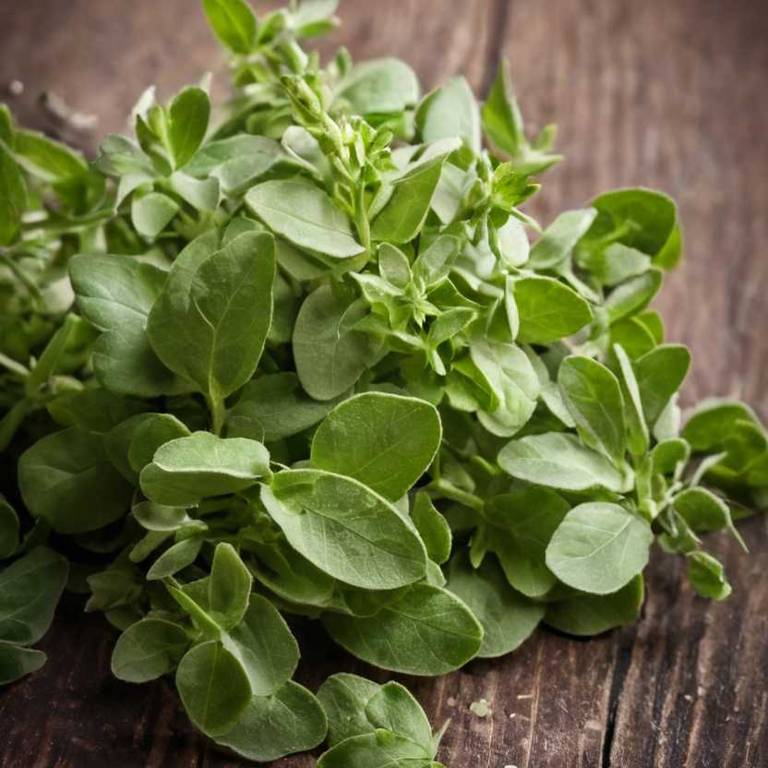By Leen Randell
Updated: Jul 20, 2024
10 Medicinal Constituents Of Origanum Vulgare (Wild Marjoram)

Origanum vulgare has active constituents such as carvacrol, thymol, and rosmarinic acid.
These constituents exhibit antibacterial, antifungal, and anti-inflammatory properties, making this plant a valuable remedy for various health issues. Carvacrol, for instance, can alleviate respiratory problems by relieving congestion, while thymol can combat oral infections and rosmarinic acid can reduce pain and inflammation.
These constituents can improve people's lives by providing relief from various health conditions, promoting overall well-being.
This article explains in details the 10 best active constituents of Origanum vulgare.
1. Carvacrol
Origanum vulgare carvacrol is a naturally occurring compound found in its essential oil.
It has been extensively studied for its antimicrobial, antioxidant, and anti-inflammatory properties, making it a popular ingredient in traditional medicine and modern cosmetics. Carvacrol has been shown to exhibit potent inhibitory effects on bacteria, fungi, and viruses, as well as reducing oxidative stress and inflammation.
Its potential health benefits have led to its inclusion in various products, from skincare creams to dietary supplements.
2. Thymol
Origanum vulgare thymol is a natural compound extracted from the leaves and flowering tops of the plant.
It has been used for centuries in traditional medicine for its antiseptic, antibacterial, and antifungal properties.
Thymol is often used to treat wounds, skin infections, and digestive issues, as well as to repel insects and improve oral health.
3. Oleanolic acid
Origanum vulgare oleanolic acid is a triterpenoid compound isolated from its leaves and stems.
It has been extensively studied for its potential health benefits, including anti-inflammatory, antioxidant, and antimicrobial properties. Oleanolic acid has been shown to inhibit the growth of certain cancer cells and reduce oxidative stress in vitro.
Its effects on cardiovascular disease and neurodegenerative disorders are also being investigated, making it a promising compound for further research and development.
4. Ursolic acid
Origanum vulgare ursolic acid is a natural compound extracted from its leaves.
It has been extensively studied for its potential health benefits, including anti-inflammatory and antioxidant properties. Ursolic acid has been shown to have antimicrobial and antifungal activities, making it effective in treating various infections.
Additionally, it may help to reduce the risk of chronic diseases such as cancer, cardiovascular disease, and diabetes by inhibiting cell proliferation and inducing apoptosis.
5. Rotundic acid
Origanum vulgare rotundic acid is a bioactive compound found in its leaves.
This phenolic acid has been studied for its potential health benefits, including antioxidant and antimicrobial properties. Rotundic acid has been shown to exhibit anti-inflammatory activity, protect against oxidative stress, and inhibit the growth of certain pathogens.
Its unique composition makes it a valuable component of traditional medicine and a promising area of research in modern pharmacology.
6. Rosmarinic acid
Origanum vulgare rosmarinic acid is a natural compound extracted from its leaves and stems.
This potent antioxidant exhibits remarkable anti-inflammatory properties, inhibiting the production of pro-inflammatory enzymes and reducing oxidative stress.
Rosmarinic acid has been extensively studied for its potential therapeutic applications, including treating cardiovascular diseases, neuroprotection, and antimicrobial activities, making it a valuable component in traditional medicine and modern pharmacology.
7. Origianin
Origanum vulgare origianin is a herb that has been used for centuries in traditional medicine and cooking.
Native to the Mediterranean region, it has sweet, piney, and slightly bitter flavor profile. Its essential oil contains carvacrol and thymol, which have antimicrobial and antiseptic properties.
Used to treat digestive issues, skin conditions, and respiratory problems, origianin is also a popular ingredient in many cuisines, particularly in Mediterranean and Italian cooking.
8. Terpinen-4-ol
Origanum vulgare terpinen-4-ol is a monoterpene compound found in its essential oil.
It possesses several bioactive properties, including antimicrobial and antioxidant activities, which contribute to the plant's medicinal uses.
Terpinen-4-ol has been shown to inhibit the growth of bacteria, fungi, and viruses, making it a valuable component in traditional medicine for treating various ailments, such as infections and skin conditions.
9. Γ-terpinene
Origanum vulgare γ-terpinene is a naturally occurring monoterpene compound found in its essential oil.
It is a major component of the herb's oil, accounting for approximately 20% of its composition. γ-Terpinene has been shown to possess antimicrobial and antioxidant properties, making it useful in various applications, including medicine and food preservation.
Its fragrance is often described as sweet and herbaceous, characteristic of wild marjoram's distinctive aroma.
10. Pulegone
Origanum vulgare pulegone is a naturally occurring compound found in the essential oil of this herb.
It is a major component of the oil, making up around 50-70% of its composition. Pulegone has been traditionally used in medicine and has been studied for its potential anti-inflammatory and antimicrobial properties.
However, high levels of pulegone can be toxic, so it should be used with caution.